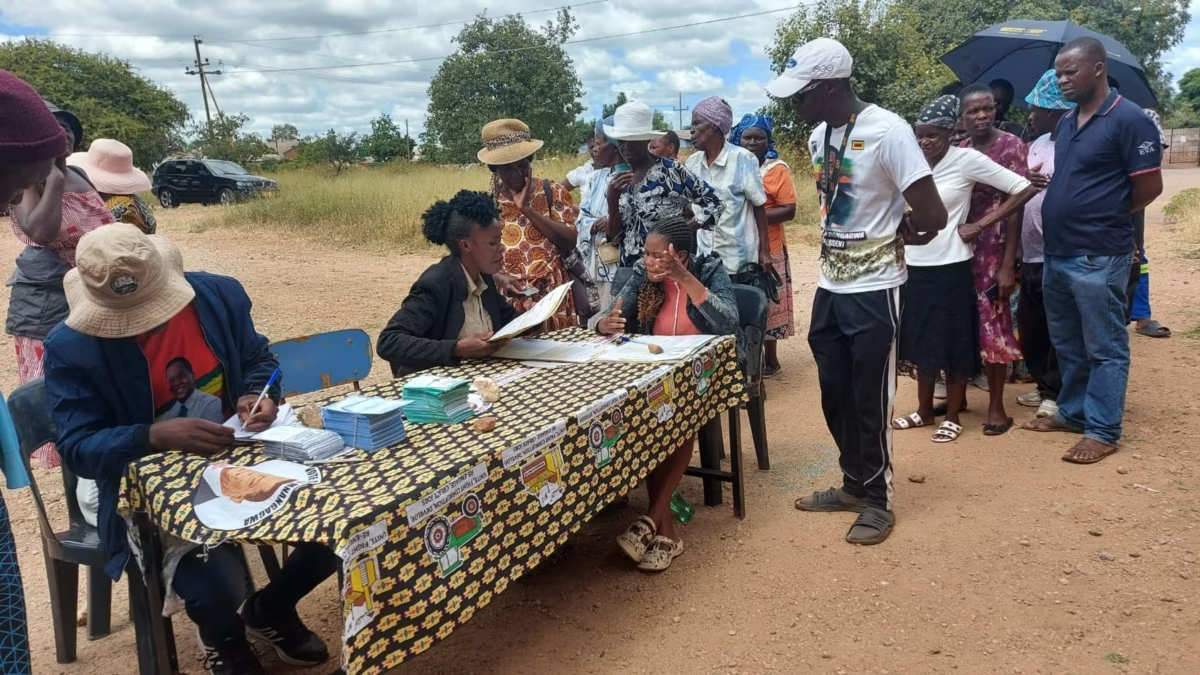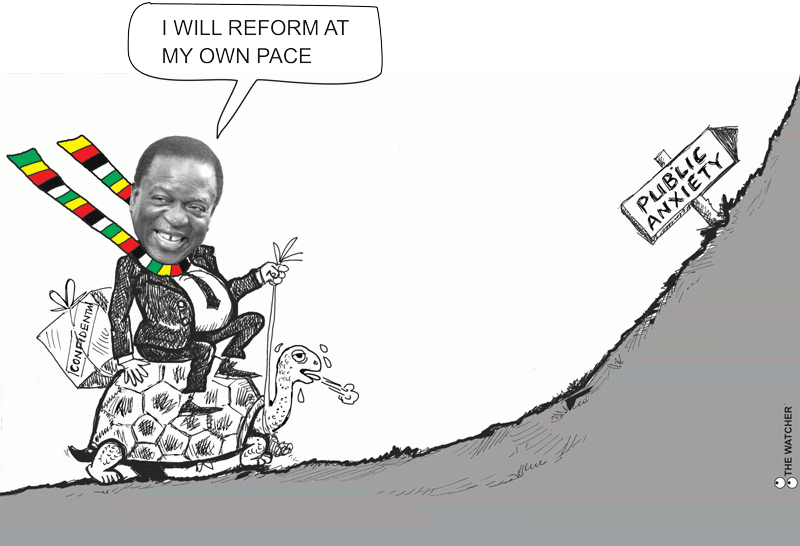
AS Zimbabwe draws closer to the ever-impending elections, the political pendulum swings between the two main contenders, Zanu PF and Citizens Coalition for Change (CCC).
The past few weeks were an exciting period headlined by Zanu PF primary elections and CCC’s novel candidate selection process. These are two important processes in the election build-up as the parties select their torchbearers for the upcoming elections.
You may be wondering, dear reader, why I am only hyping these two and disregarding the other political parties. Is Douglas Mwonzora’s party not big enough to also warrant attention from pundits? Well, my cynic self dismisses his candidates not as torchbearers but pallbearers befittingly carrying his MDC variant to its final resting place. Sideshow dismissed, may I focus on my mission this week, please!
Not my circus, not my monkeys
This week, I explore the candidate selection processes of the two major parties, CCC and Zanu PF. However, my intention is not to focus on the outcomes of the processes in terms of personalities who emerged as candidates — that is for others to dissect. Not my circus, not my monkeys.
Quite the parallel, I delve into the process itself. Exploring what it means for electoral politics within and without the parties. And what implications each might have on the outcomes of the general elections. All this, I frame within the position that political parties exist to acquire and retain state power, and elections are the legitimate means to do so.
Based on this locus, the internal processes of political parties leading to general elections are critical in the acquisition and retention of power in the general election itself.
That makes candidate selection a consequential endeavor that must serve a bigger purpose than just handing a seat to an individual.
- Chamisa party defiant after ban
- Village Rhapsody: How Zimbabwe can improve governance
- News in depth: Partisan police force persecutes opposition, shields Zanu PF rogue elements
- Chamisa chilling death threat bishop defiant
Keep Reading
The pith of candidate selection
The candidate selection process, using whatever formula, is an important task for any political party vying for elections. It serves the immediately distinct task of nominating the party candidate. Beyond that, it also serves other salient but more important purposes. In this light, I view the Zanu PF primaries as a voter mobilisation drive and a dress rehearsal beyond the apparent candidate selection function.
Then, I follow the swing of the political pendulum to the CCC process as a consensus-building and mandate-seeking exercise anchored on reviving the social contract. Of course, I will also poke holes into both processes.
The candidate nomination process can either strengthen or weaken a party. It can either contribute to strong electoral performance or result in decimation on the ballot. Our electoral history is littered with consequences of bungled candidate selection processes.
The “bhora musango” protest vote in Zanu PF and the vote-splitting double candidature in the opposition are recent blights on our political conscience. History has aptly demonstrated the immediate and disastrous impact on the party’s chances at the polls in the wake of shambolic candidate selection processes. Such political gaffes must be avoided at all costs. The candidate selection process is as important as the outcome, if not more.
The jungle and waterhole strategy
In their daily quest for survival, predators in the wild pursue two distinct strategies. One is the waterhole strategy, where the predator hunts at the waterhole for inbound prey. This is an inward-focused strategy pursued by Zanu PF through its primary elections.
This strategy focuses on organising and energising party members as the primary voting stock. The goal is self-preservation and strengthening of the party while retaining state power.
The second is the jungle strategy, where predators scour the jungle for outbound prey further afield from the waterhole. This is an outward-focused strategy pursued by CCC in its candidate selection process. It focuses on galvanizing the general masses and stakeholders into a vote bank. The goal is mandate-seeking and strengthening the movement while seeking to acquire state power.
In a sense, it can be argued that the Zanu PF process focuses on winning elections while the CCC process focuses on service delivery after winning. Comparing the checklist for an ideal candidate for each of the two parties, the Zanu PF process can be viewed as pre-occupied with self-service while the CCC is pre-occupied with public service.
It remains to be seen whether CCC’s contractarianism or Zanu PF’s consequentialism will deliver triumph at the general polls. Both are potent strategies when deployed clinically.
Novel electioneering
The CCC presents a new and refreshing way of electioneering which places the citizens at the centre of the process. It also sets minimum competencies required for key positions like members of parliament (MPs), mayors, chairs of committees etc. This presents the party as delivery oriented.
For disappointed idealists like this columnist, it re-ignites hope that political parties can exist to serve citizens. They can seek a mandate from citizens and ensure that they get a candidate they want, not an imposition by the party.
This is a welcome break from the usual self-serving club of power-mongers and tinpot elites seeking access to arenas of looting. Some of them are chancers with nothing to offer. The process adopted here cures the party of this mania and connects citizens to their leaders from the onset. It potentially gives credence to the notion of servant leadership. The involvement of citizens at this stage ensures that they are empowered to hold their leaders to account once elected because they gave them the mandate. It impresses upon leaders that they are accountable first to the electorate before they are accountable to the party.
Let me swing the pendulum back to Zanu PF.
The ghost of the delimitation report
One key issue about this year’s election is that it will be held using the new delimitation report, barring any upsets. Its effect is re-drawing electoral boundaries at all levels. The report is a product of a convoluted process mired in controversy, contestation, and, quite frankly, ineptitude. It has far-reaching implications for our political geography.
On a practical level, since our elections are polling station based, it effectively necessitates the transfer of some voters from one polling station to another in a different ward or constituency. The Zanu PF primary election mirrored these new polling stations, wards, and constituencies and can be viewed as a dress rehearsal for the general election.
A dry run of sorts. It served to familiarise their members with new polling stations and deal with confusion about which polling station one should vote in. Such confusion will diminish returns at the ballot.
The primary elections also increase the electoral tempo, energise and mobilise the voter for the general elections. As a harbinger of the general election, it psyches the members into election mode, and that can be leveraged to build momentum for the campaigns.
The voter-citizen dichotomy
The gap in the current CCC candidate selection process is its seeming divorce from the actual election matrix. It falls short in re-orienting the voter on the new electoral boundaries and polling stations. This may seem like a small matter, but it matters much. CCC will have to find means of doing a dry run of the general election else the ghost of delimitation will haunt them at the polls.
Its process is also laid back and does not sufficiently energise or mobilise voters. Granted, it galvanizes citizens, but does not mobilise voters!
The movement must understand that while all voters are citizens, not all citizens are voters. Only those who are registered will vote. The Citizens’ Community Consensus Candidate Selection Procedures Manual does not place the obligation for a citizen to be a registered voter to participate in its candidate selection process.
The point got missed here. The process also does not provide for a barometer to map out the likely number of voters in each polling station to inform campaign strategy.
This is more critical because new boundaries distort previous election data that could otherwise be used for the same purpose. Some analysts have raised fears of gerrymandering, making it crucial for CCC to have a picture of their likely electoral outcomes in each polling station.
The leopard and its spots
One does not have to be a malcontent to point out that the perpetual bane of internal contestation in Zanu PF is the bruising, divisive, factional, and rigging tendencies.
While some bigwigs fell by the wayside at the hands of young turks in the primaries, they have been salvaged by the Politburo either through a brazen reversal of the results or through make-believe re-runs. Allegations of violence, vote buying, and ballot stuffing were rife. The leopard does not change its spots.
A boon in the CCC bonnet is that its process has less confrontation or bruising contestation. It emphasizes consensus building and ensures that all actors find each other and centre the process on the citizens. The CCC process in a way forced potential candidates to campaign in the past months and to earn nominations by merit. Not just by always having been there. It enabled the party to renew itself while in the process testing the mobilisation potential of each candidate. This time, the aspiring candidates could not rely on the party institution and positions in structures to win nominations. In other words, the leopard had to earn its spots!
While misgivings may not be eliminated entirely, it potentially averts the blight of double candidature by disgruntled members hence it strengthens the movement. It remains to be seen if any bigwigs will fall in the CCC selection process.
If that happens, is the process depersonalised enough to ensure fairness? Will the leopard equally lick both its black and white spots? Or will political consequentialism kick in to salvage the ‘big names’? In Kalanga we say, “tooti ingwe tabona mabala” (we will agree it’s a leopard after seeing its spots).
Time heals all wounds
Probably aware that primary elections will rub some members the wrong way, the timing of the Zanu PF primaries is very telling, conducted way before even the proclamation of the election date. This is probably to allow enough time to heal for those who feel they have been handed the short end of the stick.
The cooling-off period before the general election is crucial to enable the party to dress the bruises and regroup to avoid the embarrassment of ‘bhora musango’. Greek poet Menander wrote around 300 B.C. that “time is the healer of all necessary evils.” This timeless wisdom has been aptly deployed by Zanu PF to heal its necessary evils!
The sober view
Candidate selection should not just serve the functional purpose of handing seats to individuals. It must be a strategy, part of the broader electoral strategy of the political parties, which mobilises and energises would-be voters. It must also create an interface between the party, its torchbearers, and the electorate. While it is a contestation, the selection matrix should be so that it encourages healthy contestation without being divisive. It should strengthen internal democracy and ensure that both the candidates and the electorate feel that the process was transparent, fair, and credible.
A balanced candidate selection strategy must be both inward-focused to strengthen the party and place it on a winning pedestal as well as outward-focused to galvanise the electorate and stakeholders to feel part of the process. In other words, the process must be as much about the self-service of the party as it is about public service to the electorate. Enough said. Let the pendulum swing as we wait for the general election to see kuti ndeipi shiri ichazongofa (which bird will eventually die).
This is my sober view; I take no prisoners!
- Dumani is an independent political analyst. He writes in his personal capacity. — Twitter: @NtandoDumani











